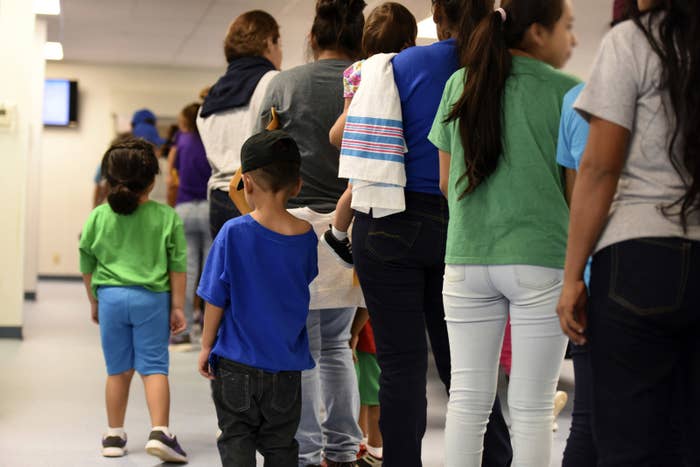
Federal officials are scaling down their capacity to hold immigrant families in detention centers and will instead likely release them directly into the US as they struggle to handle an influx at the border.
Starting Monday, Immigration and Customs Enforcement (ICE) will temporarily convert one of its three family detention centers, Karnes Family Residential Center, to hold 700 women, maintaining only a small portion of family units. Earlier in March, there were more than 500 family members at Karnes.
ICE officials said the move was necessary as the flow of families crossing the border — a projected 50,000 families are expected to be apprehended this month — has stretched its limited transportation resources to only allow for them to take families to one residential center in Texas: the South Texas Family Residential Center in Dilley.
The changes are expected to last for three months and come just days after US Customs and Border Protection Commissioner Kevin McAleenan said the flow of families crossing the border has pushed the system to a “breaking point” and that his agency had run out of capacity to hold people.
“Here in El Paso, we have almost 3,500 migrants in custody this morning in facilities designed for much fewer ... The vast majority, again, families from Central America. And all of this coming into facilities designed for short-term holds of single adults,” he said.
McAleenan added that there was “inadequate capacity” at ICE to detain families.
That means Border Patrol agents will likely start releasing families directly, instead of transferring them to ICE custody.
“I think it’s just further evidence that CBP and ICE are so overwhelmed by family units that ICE is just stepping out of the processing of families entirely,” said Sarah Pierce, an analyst at the Migration Policy Institute. “While families are being released directly from CBP custody, ICE is shifting its resources to address flows it actually is processing.”
ICE’s adult detention is “near capacity,” so the move is necessary, officials said. As of Friday, just 63 family units were in the Karnes facility, while another 1,025 were at the Texas facility and 9 were at a different center.
John Sandweg, former acting director of ICE and senior official within the Department of Homeland Security, said the move made operational sense for immigration officials.
Due to court orders, families cannot be held for more than three weeks in detention. Instead, they are released with orders to report to court for their asylum claims to be heard, many of which can be years down the line due to a massive backlog in the immigration court system.
Single adults on the other hand can be held for long periods of time and through the deportation proceedings.
“They are getting a bigger bang on the deportation perspective from adults. I think what this is — ‘Why are we detaining these families?’” Sandweg said. “Let’s take these beds, get single adults in them, detain them through proceedings, and get them out. Family detention is just for show. It has no deterrent impact.”
